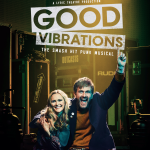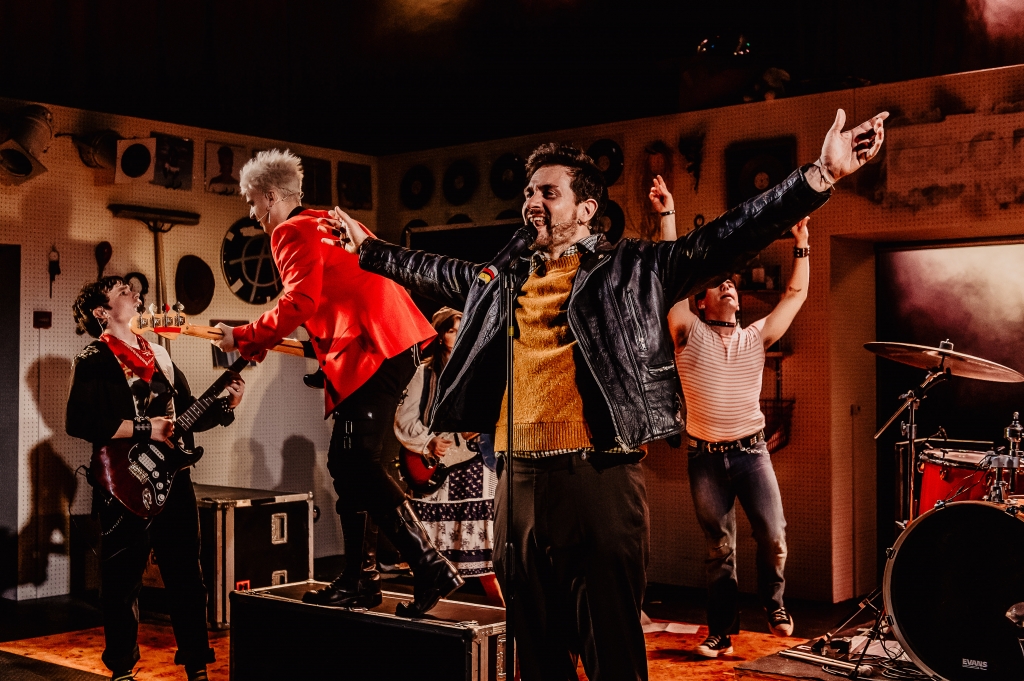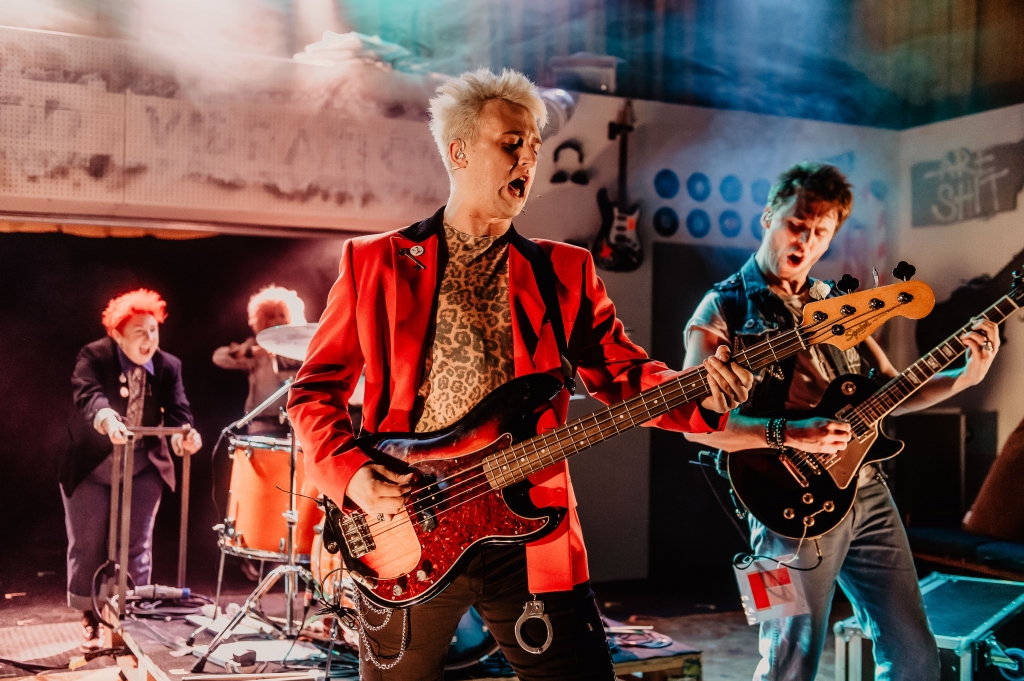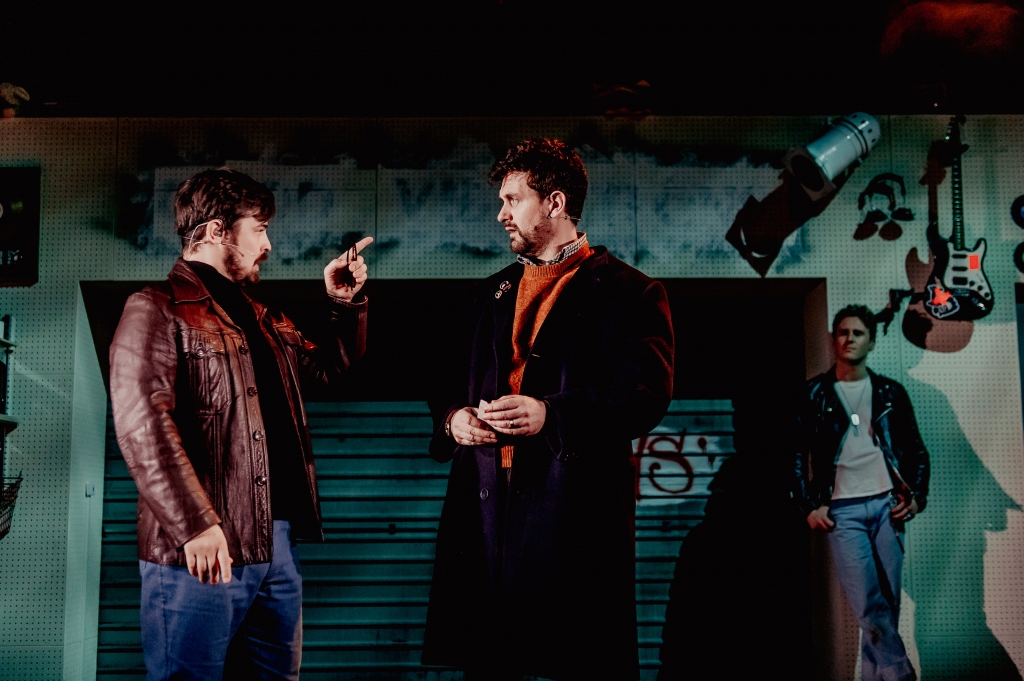 A few minutes before the production of Good Vibrations at the Opera House, a white-haired guy sits down in Row H. He looks at the stage and measures the scene up there. Hey, it’s an old record shop with pegboard on the walls. There are punk badges plus albums by Bowie, The Damned and Patti Smith. The booze bottles are empty and the dingy surrounds are familiar to generations of crate-diggers.
A few minutes before the production of Good Vibrations at the Opera House, a white-haired guy sits down in Row H. He looks at the stage and measures the scene up there. Hey, it’s an old record shop with pegboard on the walls. There are punk badges plus albums by Bowie, The Damned and Patti Smith. The booze bottles are empty and the dingy surrounds are familiar to generations of crate-diggers.
The guy in the stalls is about to see his personal story, acted out in public. Good Vibrations was previously staged at The Lyric theatre in 2018. Earlier, back in 2013, it was the storyline of a full-length film. So, this is hardly a novel moment. Even so, this audience member wants to make a statement.
“Terri Hooley’s a wanker!” he shouts, as showtime approaches. He’s basically heckling himself.
Hey, Terri, we’re very glad you’re here.

Photo by Carrie Davenport
The subject of Good Vibrations is so lost in the myth now that the actual person may struggle to notice the embellishments. Perhaps it’s not so important. The musical was a sell-out at the Lyric, chiefly because of nostalgia and the fable of a strong, unafraid voice during a horrific age.
The point of the story is that the outsiders can win. They may live in a city that’s militarised, carved up and hateful, but music can provide an alternative steer. The energy comes from teenagers with guitars and valiant hearts yet there’s scope for an older enabler. That was Terri’s gig. He had been active in Sixties counterculture and he understood the value of mischief. Punk rock was a new expression of this and he was ready to assist. His shop became a safe place and ultimately a record label, where authentic voices got heard.

Photo by Carrie Davenport
Richard Dormer took the film role and he layered on the many Hooley attributes. He was sweet, boastful and unreliable. When he put a prosthetic on his eye, he discovered that it caused him to walk in a slanted manner, protecting his blind side. He heard Terri pronounce the word “fantastic” in an archive film clip, he built a lexicon of enthusiasm about it. It was all dreams, joy, rambling testimonies and the chance to let the kids feel self-empowered.
Dormer also found the steel in the character, the essence of the former “hatchet man” from east Belfast who was capable of self-preservation. Hooley had been written off as educationally sub-normal but still he had flourished. And Richard noted Terri’s camp aspects, a style that had come into the mainstream with Dylan, Jagger and Warhol. You could confuse the squares with speech patterns and mannerisms. Your life could be rich, strange and beyond their limits.
Dormer was tremendous in the film, aided by the savage, entertaining script by Glenn Patterson and Colin Carberry. His acting legacy must be daunting to the successors. Aaron McCusker took a good run at the position on the Lyric stage and now it’s a pressure for Glen Wallace.

Photo by Carrie Davenport
The 2018 production (reviewed by Dig With It here), carried the punk attitude forward. It gave the show verve and momentum. Much of that has continued in the Opera House version. The rear shutter becomes a gig venue, a street scene and the barrier to a hostile world. When it rolls up and the drum riser hurtles forwards, all of the kinetic rattle is unleashed.
The pandemic caused the Opera House production to be delayed by three years. A handful of the cast remain, notably Connor Burnside, who plays drums better than any punk and also deputises as a paramilitary bootboy. The script is largely the same although the Ruth character (Jayne Wisener) is recognised as a creative figure in her own right, giving her relationship with Terri more equity. There’s an introverted boy who frequents the shop, who seems like an addition that adds very little.
While the Lyric production wanted to avoid the ‘musical’ tag, it’s now billed as “The smash punk musical”. There are added tunes from Protex (‘I Can Only Dream’) and Love (‘Alone Again Or’). Fran O’ Toole from the Miami Showband (killed by the State-assisted Glenane Gang in 1975) is remembered with the impactful swoon and mood changer of ‘Can’t You Understand’.

Photo by Carrie Davenport
Marty Maguire is good as Terri’s father George, but terrible as John Peel. The comedy nuns and stock Orangeman are irksome. Likewise, the Tom Cruise dance moves of one cast member. There are some extra pieces of exposition about the conflict that audiences in New York will appreciate, later in the summer. Still, it doesn’t feel contrived. There’s no jarring note to indicate that the production has merely become an adjunct to the tourism industry. Which may be the biggest relief of all.
What seems to be lacking in this early moment at the Opera House is the sense of full-blown psychosis of Seventies Belfast. This was explored so well in the film. The hard men roles now seem lightweight. The chaos rarely shakes you. And ultimately, a lot of the expectation falters around the Glen Wallace performance. He doesn’t quite summon up the turbulence, the emotionality or the fierce charisma that the story depends on. Some of the rhythms are missed and several punchlines wither.
The show ends, as expected, with ‘Teenage Kicks’. It’s a knees-up and also their get out of jail free card. The audience stands and cheers, partly with gratitude and perhaps also as a reflex. You wouldn’t begrudge it, but before we might hear another round of “Terri is our leader”, the guy onstage needs to really act like one.
Stuart Bailie
(Good Vibrations, Belfast Opera House, 10.05.23)







 Twitter
Twitter